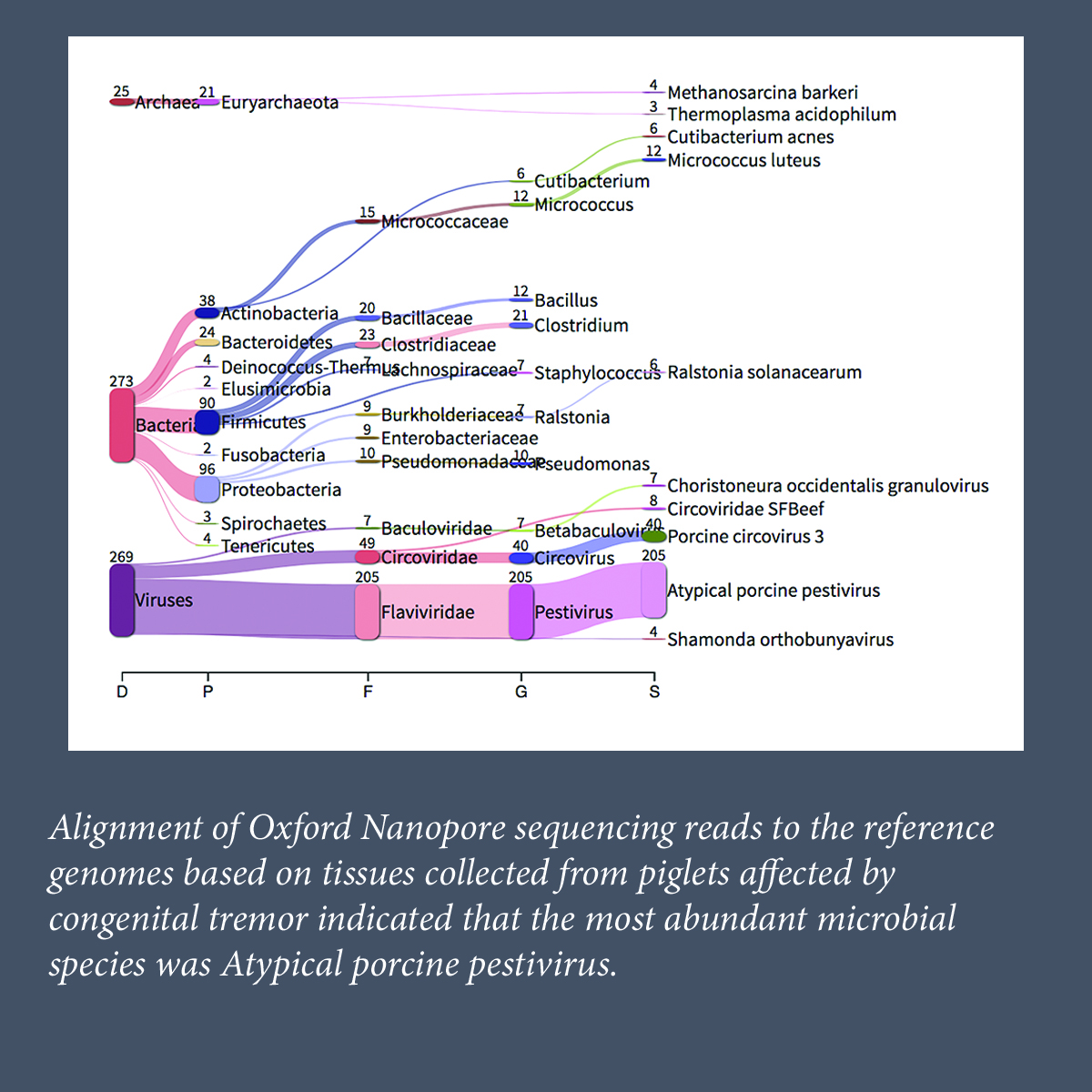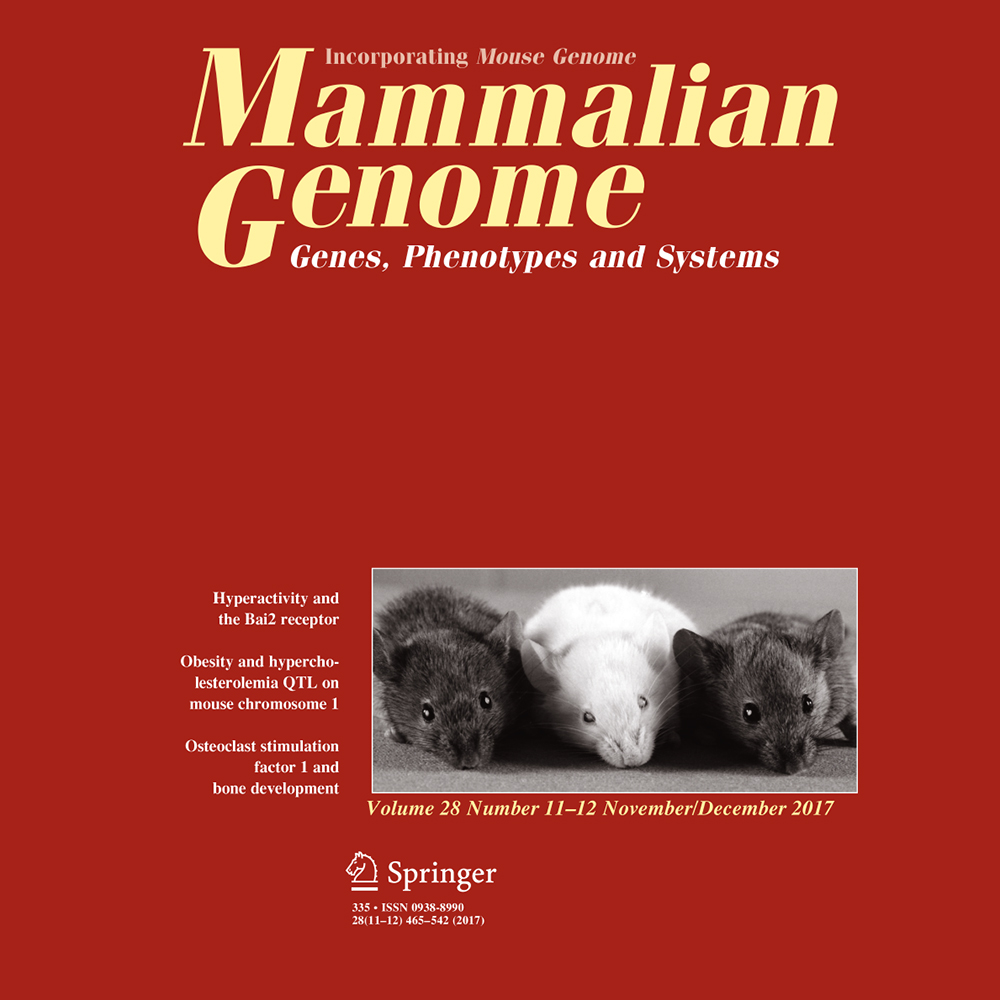The main focus of my research is to identify and understand the genetic sources of variation of complex phenotypes, with an emphasis on disease susceptibility. In my laboratory we integrate a variety of molecular genetics, functional genomics and statistical approaches in order to identify genes, gene variants and mechanisms associated with variation in traits such as viral disease susceptibility or female fertility, in swine and in model organisms, like BXD mice.
Identification of genes and gene variants associated with complex phenotypes in swine. My research integrates genomic data with multiple layers of fine molecular phenotypes following exposure of diverse germplasm to various stressors. The long-term objective of this research is to identify genes, uncover molecular mechanisms and develop genetic markers that could be used to reduce economic losses associated with viral disease susceptibility and sow infertility, both of which are high priorities for swine farmers.

Example 1
A missense mutation in SYNGR2 influences replication of Porcine circovirus 2 Walker LR, Engle TB, Vu H, Tosky ER, Nonneman DJ, Smith TPL, Borza T, Burkey TE, Plastow GS, Kachman SD, Ciobanu DC. Synaptogyrin-2 influences replication of Porcine circovirus 2. PLoS Genet. 2018 Oct 31;14(10):e1007750. doi:10.1371/journal.pgen.1007750. eCollection 2018 Oct. PubMed PMID: 30379811.

Example 2
Metagenomic analysis uncover a potential role of Atypical porcine pestivirus in congenital tremor in pigs Sutton KM, Lahmers KK, Harris SP, Wijesena HR, Mote BE, Kachman SD, Borza T, Ciobanu DC. Detection of Atypical Porcine Pestivirus Genome in Newborn Piglets Affected by Congenital Tremor and High Pre-weaning Mortality. J Anim Sci. 2019 Aug 9. doi: 10.1093/jas/skz267. PMID:31396615.
Example 3
Multiple genomics approaches led to a custom genotyping array to uncover genetic sources associated with variation in age at puberty and sow fertility.
Wijesena HR, Rohrer GA, Nonneman DJ, Keel BN, Petersen JL, Kachman SD, Ciobanu DC. Evaluation of genotype quality parameters for SowPro90, a novel genotyping array for swine, J Anim Sci. 2019, May 31. doi: 10.1093/jas/skz185.
Evaluate relationships between host genetics, complex phenotypes and disease risk, using mouse models. In collaboration with colleagues from the medical field, particularly Drs. Rob Williams (University of Tennessee Health Science Center - UTHSC) and Johan Auwerx (Ecole Polytechnique Fédérale de Lausanne, Switzerland - EPFL) I have used mouse as a model to understand genetic sources of congenital disorders and the relationships between host genetics, gut microbiota and diet and their effect on liver metabolites and disease susceptibility.

Example 4
Interaction between host genetics, gut microbiota and diets and their impact on disease susceptibility
Perez-Munoz ME, McKnite AM, Williams EG, Auwerx J, Williams RW, Peterson DA, Ciobanu DC. Diet Modulates Cecum Bacterial Diversity and Physiological Phenotypes across the BXD Mouse Genetic Reference Population. PLoS One. 2019 Oct 21;14(10):e0224100. doi: 10.1371/journal.pone.0224100. PMID:31634382.
A 16.7 kb deletion in Sipa1l3 is associated with juvenile cataract in mice.
Walker LR, Tosky ER, Sutton KM, Griess R, Abebe MD, Barnes SY, Cunnigham T, Kachman SD, Nielsen MK, Ciobanu DC. A 16.7kb deletion in Sipa1l3 is associated with juvenile cataract in mice. Mamm Genome. 2017 Dec;28(11-12):515-519. doi: 10.1007/s00335-017-9720-9. Epub 2017 Sep 26. PubMed PMID: 28951961.
